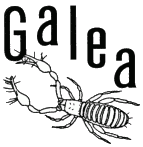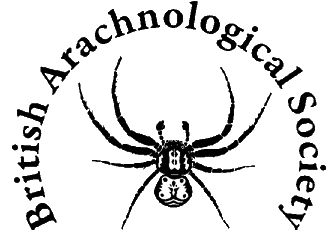Introduction

Pseudoscorpions are so called because of their superficial resemblance to scorpions. A superficial resemblance is as far as it goes, because they lack the tapering 'abdomen' terminating in a sting and they breathe using tracheae, not lung books. Above all, they are very small, the largest known having a body length of not much more than 8mm. These secretive animals are found beneath bark, in caves, rock crevices, leaf litter, rotting wood, bird and mammal nests, barn debris, amongst grass stems and similar habitats. As they are small and frequently overlooked, but where they live they are the 'tigers' of their habitat, actively hunting and killing small insect and other prey. Many are capable of producing venom from one or more claws of their pedipalp. This can be extremely toxic, if you are an insect, and some are quite capable of quickly felling prey several times their own size. The chelicerae are very complex having a powerful biting 'finger', food filters, special sensory hairs and even silk producing glands.
Silk produced by the chelicerae is used to build tiny retreats for aestivation, moulting and rearing young. Silk-like material is also produced by males in the form of spermatophores, structures upon which packets of sperm are fixed for the female to pick up. Mating involves the male leaving spermatophores randomly around for the female to find, males producing them only when sensing a female, or producing them after 'dancing' together, with or without holding 'hands' (pedipalps) like scorpions. Eggs are not laid, but kept attached to the female's genital aperture where they are nourished as they develop. The first stage larvae also remain attached to her and receive nutriment. In some species the mother continues to feed them with secretions from her mouth even when they have moulted.
There are only 28 species recorded in Britain ([click here] for a checklist), one of which was only added to the British list relatively recently and a second 'new' one in the early 1970s. Their small size and secretive habits makes them one of the Cinderella groups with few people ever seeing them despite the fact that they occur in large numbers and are important top predators. Apart from those deliberately searching for them, dipterists and coleopterists are most likely to come across them, as several species are phoretic (phoresis is a nonparasitic relationship in which one species is carried about by another) on flies and beetles. The main habitats where they can be found include soil, humus, leaf-litter, rotting wood, beneath tree bark, animal nests, barn/warehouse debris, strandline debris, grass roots, old thatch and amongst Sphagnum. The latter habitat yielded our most recent species, Microbisium brevifemoratum, and is very worthy of further investigation as only has only been recorded twice. Details of British pseudoscorpions, images, and current distributions can be found at http://www.chelifer.com/?page_id=81.
The UK (and Ireland) Pseudoscorpion Recording Scheme has been running for a many years originally under the direction of the Records Centre at the former ITE Monks Wood Experimental Station.
The first atlas showing the distribution of the species was produced in 1984 using the Institute of Terrestrial Ecology (ITE, Monks Wood) data by the then recorder, Philip Jones. Philip transferred the scheme to Gerald Legg who later digitised the thousands of punched card records from ITE. Gerald, who was Keeper of Natural Sciences at the Booth Museum of Natural History, Brighton until his recent retirement, runs the scheme from home. Details are available at www.chelifer.com/pseudos/index.htm where images of the species, distribution maps are available. The old, periodically published newsletter, Galea, can be downloaded below.
Gerald is only too happy to identify specimens sent to him (please be sure to let him know the location information (grid reference or postcode) and date of collection so that your record can be added to the national database). His contact details are below.
Contact
Dr Gerald Legg 20 Manor Gardens, Hurstpierpoint, Hassocks, West Sussex. BN6 9UG E-mail: prgATbritishspiders.org.uk or geraldATchelifer.com (replace 'AT' in the email address with '@') website: http://www.chelifer.com/?page_id=81
Newsletter
Articles and news on pseudoscorpions are published in the BAS Newsletter. You must be a member to access the newletters from our library. But between 1998 and 2003 the Scheme produced separate newsletters which are publicly accessible here: Galea 1-6 (November 1998 - November 2003).
